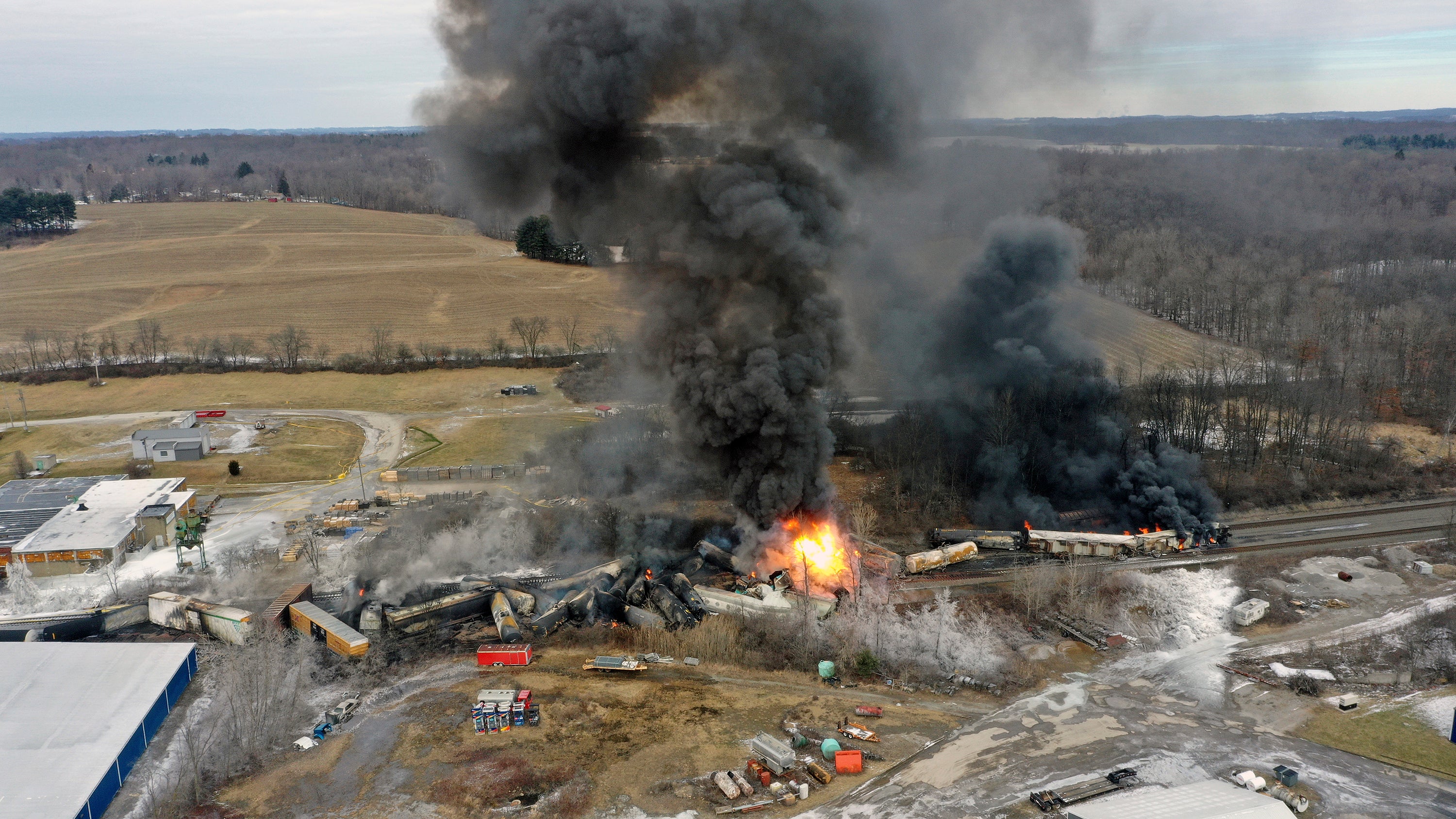LOCALIZE IT: Derailment puts focus on hazardous shipments

EDITORS/NEWS DIRECTORS:
A recent fiery train derailment that forced evacuations in Ohio has reignited questions about railroad safety and hazardous materials shipments.
Fifty cars on a Norfolk Southern train, including 10 carrying hazardous materials, derailed near the town of East Palestine in eastern Ohio.
Concerns about whether five of those cars containing vinyl chloride could explode prompted officials to evacuate half the town and a surrounding rural area. Then crews released the toxic chemical and burned it. Residents had to remain away from their homes while officials monitored chemical levels in the air and water to determine when it would be safe to return.
Hazardous materials shipments account for 7-8% of the roughly 30 million shipments railroads deliver across the U.S. each year.
The Association of American Railroads trade group says 99.9% of those hazardous materials shipments reach their destinations safely. But even one derailment involving hazardous materials could be disastrous, especially if it happened in a populated area.
___
READ AP'S LATEST
Fiery Ohio derailment raises railroad safety questions
Residents can return after air deemed safe from derailment
Toxic gases connected to Ohio train derailment cause concern
___
FIND YOUR LOCAL DATA
— The Federal Railroad Administration tracks railroad accidents and derailments. Here is an overview of the recent accident trends by different causes. The data can be sorted by state to find local statistics. The FRA also maintains a database where you can look up accident data and find reports on specific instances in your area.
— The Pipeline and Hazardous Materials Safety Administration has a database of information about hazardous materials incidents. The site includes data on incidents from 2013 to 2022, and it can be broken down by the mode of transportation. It also includes details about injuries and evacuations.
— The Association of American Railroads trade group reports railroad traffic data on a weekly basis. The numbers are broken down into the major shipping categories of: chemical, coal, farm products, forest products, grain, metallic ores and metals, motor vehicles and parts, nonmetallic minerals, petroleum and petroleum products, intermodal shipping containers and other.
___
TAKE YOUR REPORTING FURTHER
— Contact your state emergency response agency to ask about the precautions that are taken to keep hazardous materials shipments safe. Ask about how railroads route hazardous materials shipments on the safest possible paths.
— Contact your local fire department to ask about how first responders are trained to respond to a railroad accident.
— Ask what first responders do to prepare for hazardous materials accidents Ask how their response changes if they are dealing with hazardous chemicals.
— Railroads cross through nearly every city and town across the country. If you have significant railroad operations in your city, contact local railroad unions and try to ask workers about what its like working on a railroad.
___
PUBLISH THIS BACKGROUND
The worst railroad disaster in recent history happened in 2013 when the brakes failed on a train in the hills above the Canadian town of Lac Megantic. The train rolled downhill into the town and derailed, killing 47 people and causing millions of dollars in damage.
A 2005 derailment in Graniteville, South Carolina, killed nine people and injured more than 250 when toxic chlorine gases were released.
Another fiery derailment happened just outside the town of Casselton, North Dakota, in 2013 after a crude oil train collided with several cars from a grain train that had derailed.
Concerns about hazardous materials shipments grew more than a decade ago after the number of crude oil shipments railroad hauled surged as domestic energy production grew.
The railroad industry has made a number of major operational changes and eliminated roughly one-third of its jobs over the past six years. Railroads now rely on fewer, longer trains, so they say they don’t need as many crews, mechanics and locomotives. Rail unions say the changes have made railroads riskier because workers are spread more thin, but the industry has defended its safety record.
___
Localize It is an occasional feature produced by The Associated Press for its customers’ use. Questions can be directed to Katie Oyan at koyan@ap.org.
Subscribe to Independent Premium to bookmark this article
Want to bookmark your favourite articles and stories to read or reference later? Start your Independent Premium subscription today.
